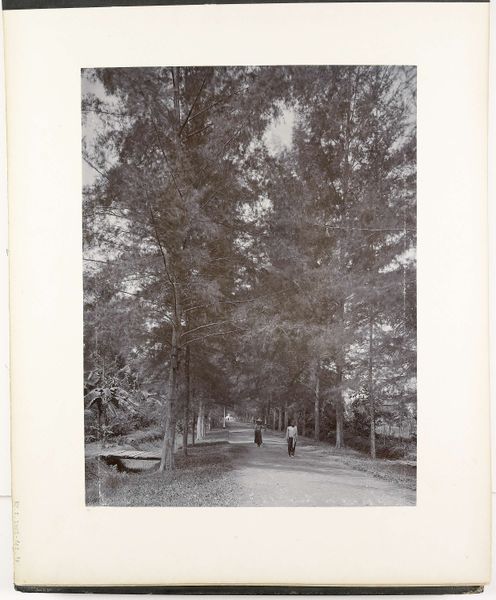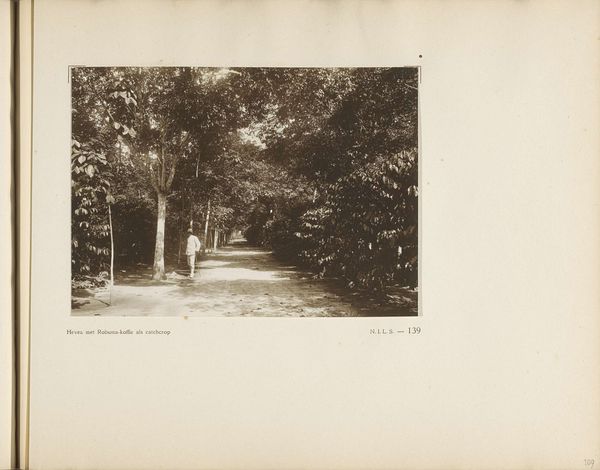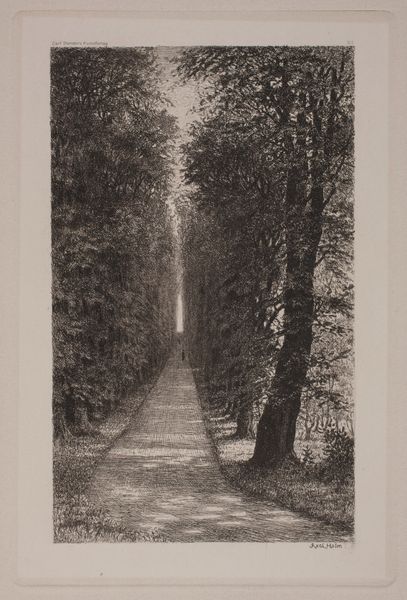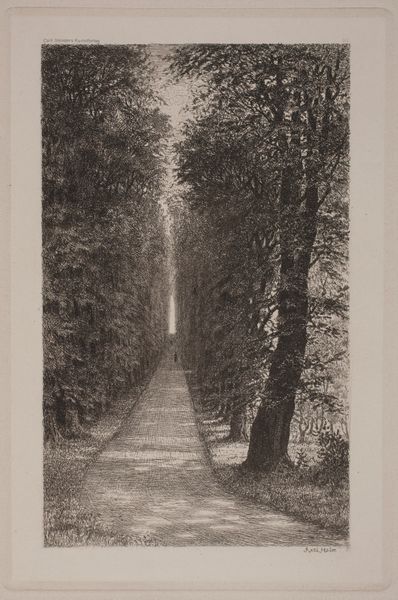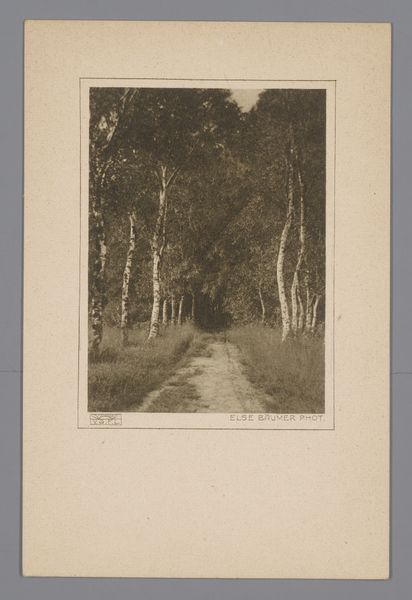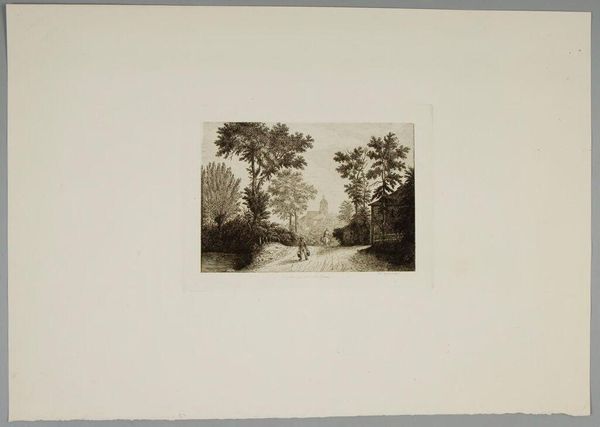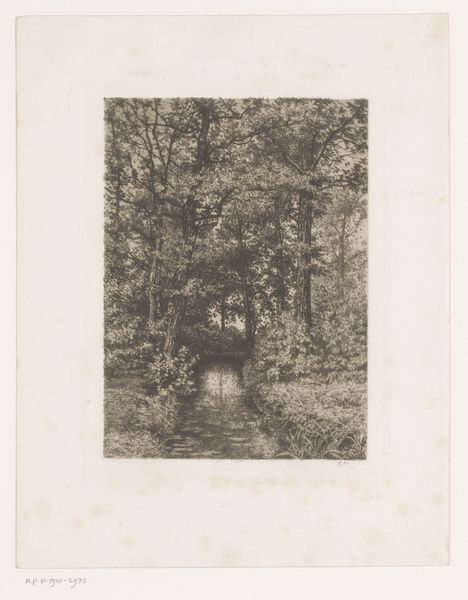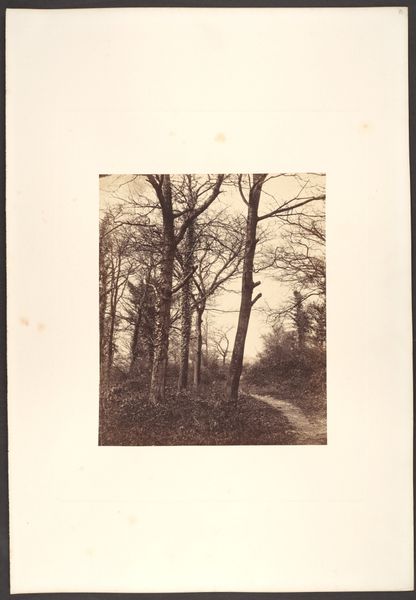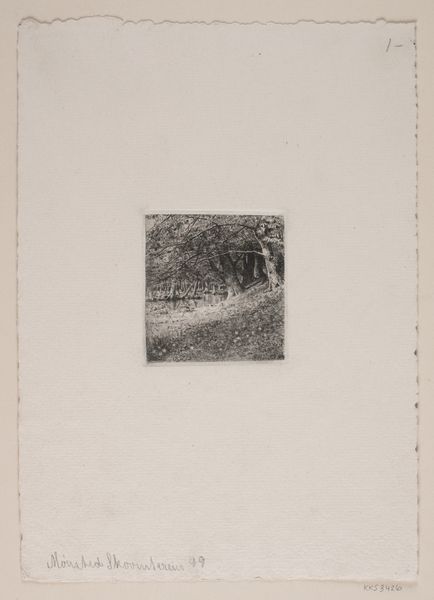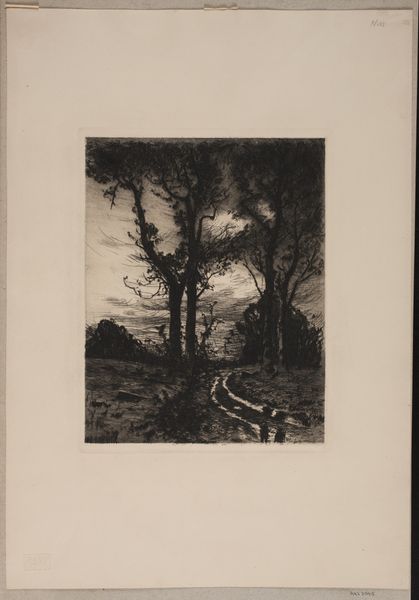
Dimensions: 245 mm (height) x 166 mm (width) (Plademål)
Editor: Here we have Axel Holm's 1895 etching, "Sukkenes allé," or "Alley of Sighs." It’s a very striking composition; the stark, almost oppressive symmetry of the trees is fascinating. What's your interpretation? Curator: Well, looking at this etching through a historical lens, I find myself considering the socio-political implications of landscapes like this during the late 19th century. Did such controlled, geometric environments reflect the rigid societal structures of the time? Editor: That's an interesting thought. How so? Curator: Consider how gardens and parks were often commissioned and enjoyed by the upper classes. These meticulously planned landscapes, such as the "Alley of Sighs", became potent symbols of wealth, control, and societal power dynamics. Did artists use their work as implicit critiques, or merely documentation, of those inequalities? I would argue it's somewhere in the middle. Editor: I see. So the art isn’t just *of* the land, but *about* who controls the land and the imagery around it? Curator: Precisely. And how these images function within the art world itself – were these prints accessible to a wide audience, or primarily circulated amongst the elite, further solidifying class boundaries? Editor: That’s a fascinating layer I hadn’t considered before. It’s more than just a pretty landscape; it's a snapshot of social structures. Curator: Exactly. The power of art lies not only in its aesthetic qualities but in its role as a social and cultural artifact. Thank you for considering how power seeps through these depictions.
Comments
No comments
Be the first to comment and join the conversation on the ultimate creative platform.

